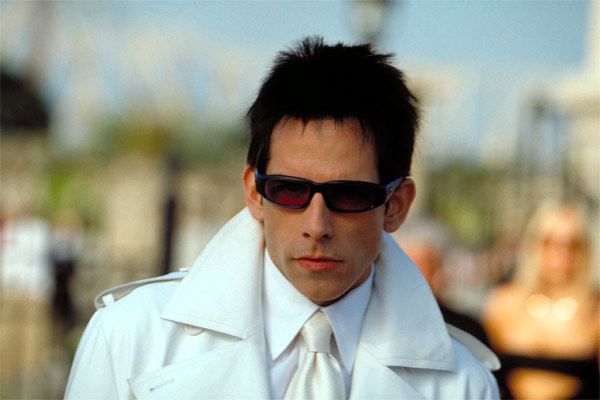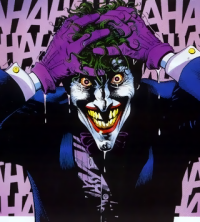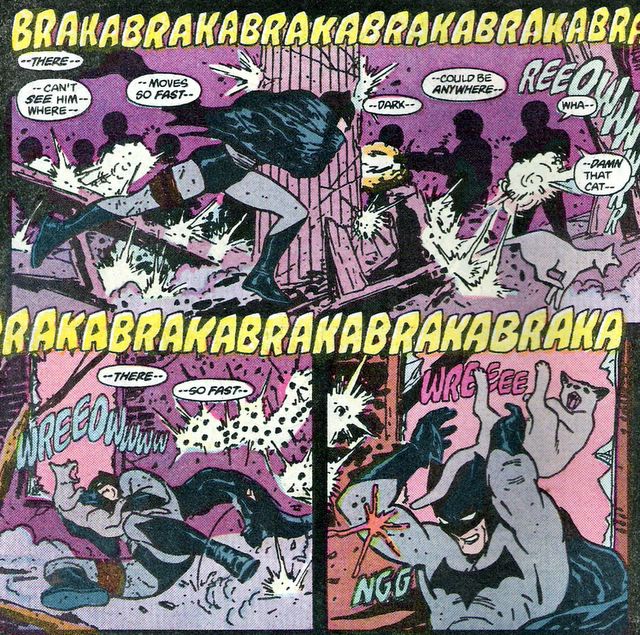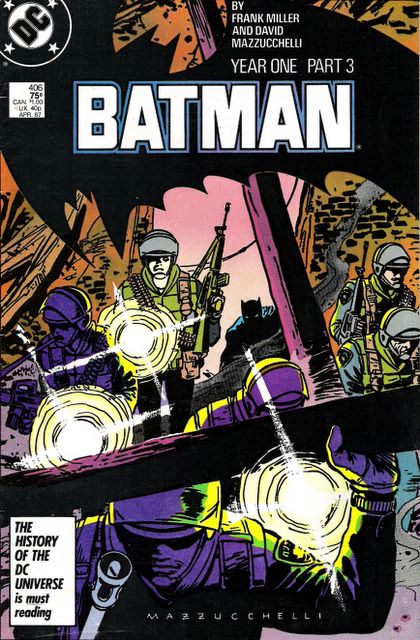"I expect you boys to execute."

"Friday Night Lights" isn't really about American football. But then again, it is, and it renders that game with skill and knowledge and a sure feel for the unavoidable cliches of the portrayal of any sporting contest in a fictional narrative, but it isn't solely about American football. Its a portrait of a Texan town in all of its knotty complexity, and it takes the High School Football team as its entry point into the life of that town. Its my favourite of the new American dramas I've seen this year - I say this without having yet seen either "Heroes" or "John from Cincinnati" - and in its way, its one of the most important shows on tv at the moment.
That may seem a silly claim, considering the subject matter. But what "Friday Night Lights" is really concerned with is the way people live in America today, and it attempts to tackle that massive and difficult subject matter honestly and with an emotional generosity in terms of its fairness of characterisation reminiscent of "The Wire".
Based upon H.G. Bissinger's non-fiction book recounting a season with a single High School football team on their way to the State Final backed by a rabidly partisan town, Peter Berg's 2005 film "Friday Night Lights" was that rare thing - an American sports film that avoided sentimentality and dealt in the reality of what a simple game can come to mean to people, or indeed a whole community. Its a great little film, filled with good performances and well-written characters. Berg's a protege of Michael Mann - he appears briefly in "Collateral" (2004) and Mann produced his most recent film, "The Kingdom" - and he shows off some stylistic chops influenced by his mentor in the football scenes - choppy and handheld for maximum visceral impact - and in the haunting passages where Explosions In the Sky's guitars fill the soundtrack and the camera glides over the bleakness of endless Texan wilderness and suburbia. "Friday Night Lights" was his third film as director, following the excessive, misjudged black comedy of "Very Bad Things" (1998) and The Rundown" (aka "Welcome to the Jungle" (2003)), a slightly quirky action film starring the Rock. Both those films suggested in their different ways that Berg might have some talent behind the camera. His acting career had never really gotten any bigger than supporting parts in "The Last Seduction" (1994) and "A Midnight Clear" (1992), altough he was good as one of the lead characters in the tv hospital drama "Chicago Hope".

Working on that show gave him his first serious experiences as a director, and he remained in television to create his own series for ABC a few years later. "Wonderland" (2000) was a blackly comic drama set in a Psychiatric Hospital, following the lives of both doctors and patients. It possessed a high quality cast featuring the likes of Ted Levine, Patricia Clarkson, Martin Donovan and Michelle Forbes, tackled an unusual subject with bravery and humour, and premiered to a barrage of criticism from pressure groups who accused it of insulting the mentally ill. Bowing to political pressure, ABC cancelled the show after only the second episode, and Berg returned to cinema. Heres a brief trailer for that curtailed series:
The modest success of "The Rundown" enabled Berg to direct "Friday Night Lights", which was a project Richard Linklater had been struggling to bring to fruition for years. When the movie was adapted for television, Berg obviously played a major role - he directed the pilot show, and the series follows the visual and musical template of the film slavishly. A character even shares a name with Forbes' character in "Wonderland". While from a distance, it may appear to be in the same vein as the likes of "The O.C." and "One Tree Hill" (especially given the prettiness of the cast), "Friday Night Lights" is decidedly different. Berg's appreciation for black comedy (evident in his first two films and "Wonderland") and the shows emphasis on the blue collar side of American life make sure of that. The pilot copies the structure of the film's first act, but then the show picks up the ball touched down by the movie, and it runs with it. Only four of the football players are major characters, and their character arcs rise and fall over the course of the first season. Perhaps the biggest change from the film is the fate of the team's Star Player. In the film, that character is the cocky black running back, his career ended by an injury early in the Season. His character remains in the series, but the injury instead befalls the team's starting quarterback and leader, the school and town's Prince, Jason Street (Scott Porter). His struggle with life in a wheelchair and the effect it has upon his girlfriend, family and team-mates is one of the major continuing storylines, and is always dealt with in the most clear-eyed and realistic fashion.

This is another feature differentiating "Friday Night Lights" from many other superficially similar shows. Whilst it is clearly a soap opera, with storylines mainly concerning romantic entanglements and friendships lost and found, it does not shy away from unglamorous, difficult subject matter, which it then renders without sensationalism. Street's injury shifts the focus of the team onto the 2nd string quarterback, Matt Saracen (Zach Gilford), a diffident and sensitive teen who had expected to coast through his time on the team, never really having to play at all. His growth as a person and player is brilliantly-handled, with Gilford perfectly capturing the character's stuttering nervousness and eventual growing confidence. Perhaps the shows greatest strength is in the attention it consistently pays to supporting characters such as Saracen's best friend, Landry (Jesse Plemons), and his Grandmother (Louanne Stephens). Indeed, by the end of the 22 episodes, it seems as if almost every character has been given depth and motivation, and the political and social networks that bisect the town seem impossibly complex and truthfully personal. This ability to meander and follow tangents allows the show to address a series of subjects vital to America itself, from the treatment of the Iraq War (Saracen's father is serving there), to racism (in a two-part story detailing a rift in the team), through to the everyday presence of religion in the life of the town and the constant awareness of the pressures upon these young people.
They are pressured by a town expecting success upon the football field but also by the future rushing up to greet them, represented by academic options and the looming spectre of the economic depression Dillon seems to permanently exist in. There are references to the death of the old industries, specifically oil, and many of the characters yearn for escape or bemoan the fact that its too late for one. These are teens working in fast food restaurants, with absent parents and few prospects beyond football. There are also the usual teen pressures, each of them present and correct, if generally viewed from an interesting perspective by a show which never went for an easy answer: its treatment of teen sexuality is almost sweet, especially in the portrayal of the relationship between Saracen and Julie (Aimee Teegarden), the Coach's daughter. It also touches upon bullying, mental illness, rape and substance abuse.
All of which makes it sound like an insufferably heavy show, unremittingly serious and pompous. But its often tremendously funny, particularly in the scenes of the arguments between Coach Taylor (Kyle Chandler) and his wife Tami (the brilliant Connie Britton), and in the scenes of geeky comradeship involving Saracen and Landry. Indeed, the relationship of the Taylors is perhaps the true heart of the show, as their conflicts, struggles and warmth reflect those experienced by the town and the team. It is, however, a show which is forced to return every episode or two to its central immediate plotline - the progress of the Dillon Panthers in their quest for the State Championship. It occasionally goes a whole episode without any footage of the team playing or even training, but always must circle back to detail the next game. This means the show has to be inventive to avoid becoming overly repetitious, and it uses just about every variation on game narratives it can come up with, holding back on its best moves until the epic confrontation in the final episode. The games are always well-shot and gripping, focused as they invariably are upon the fortunes of one of the players we know intimately, or upon some tactical gamble taken by Taylor. If the usual dramatic arc in a sports story is that of the victory snatched from the jaws of defeat, then "Friday Night Lights" avoids this trope when it can without ever denying the audience the undeniable rush it provides. But generally, especially early in the Season, the football matches are notable more for the light they shed upon different aspects of the characters involved than for the results. The players find themselves and discover weakness on the field. While this may sound cheesy or mawkish, the drama and characterisation is always well-handled so that it never feels anything other than beautifully done.
If there is any other barometer for its artistic success, than it may be "Friday Night Lights" lack of commercial popularity which best attests to its quality. While identikit shows like the "CSI" and "Law & Order" franchises and their sundry medical and legal procedural stepchildren dominate US ratings, "Friday Night Lights" was only granted a second Season due to its network's belief in its worth and the fawning critical notices it had received. Its ratings were paltry, but then it has the courage to say difficult things about America, and that is seldom a crowd-pleasing activity in times of political and economic anxiety. For that if nothing else, "Friday Night Lights" should be praised.
Labels: tv

















